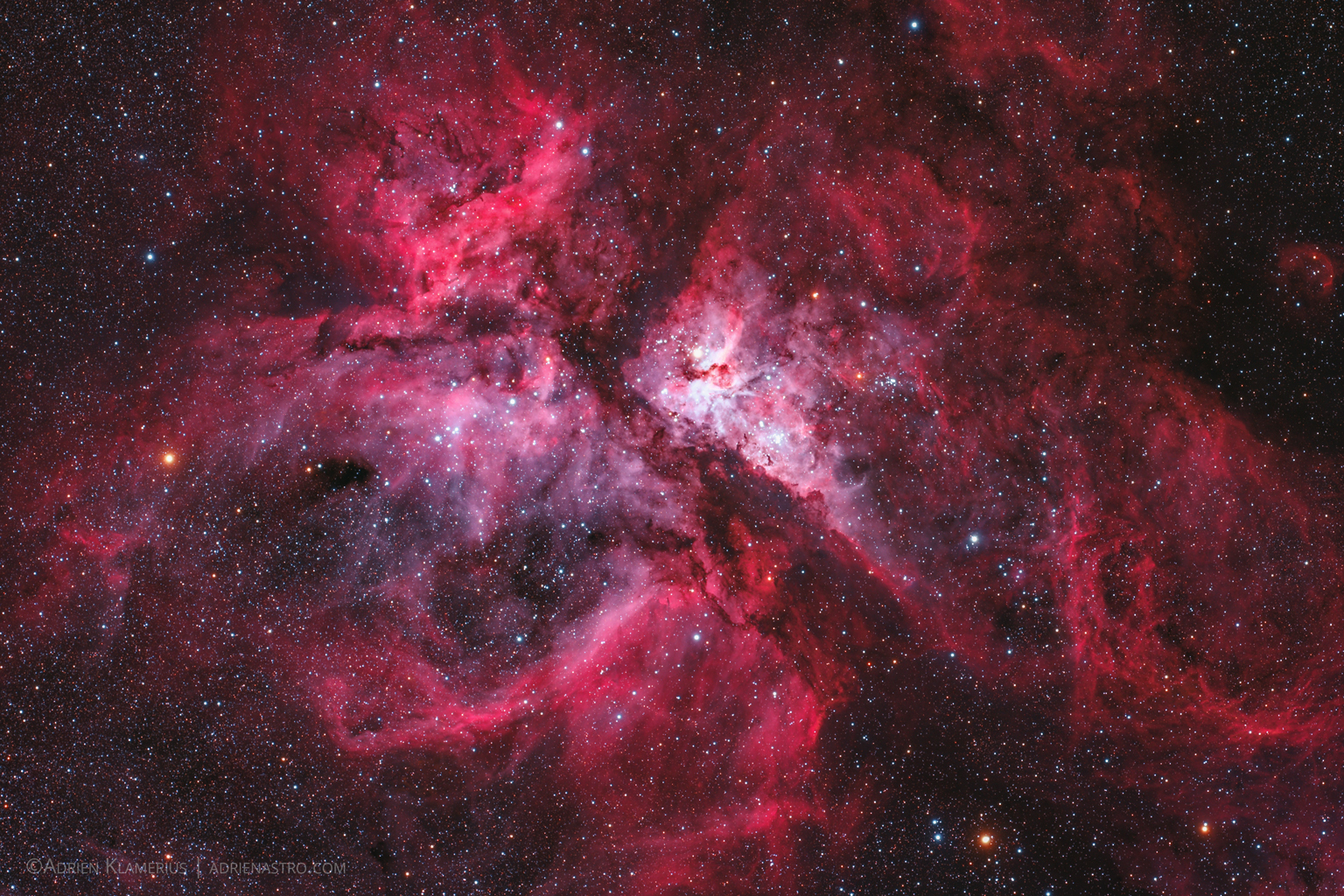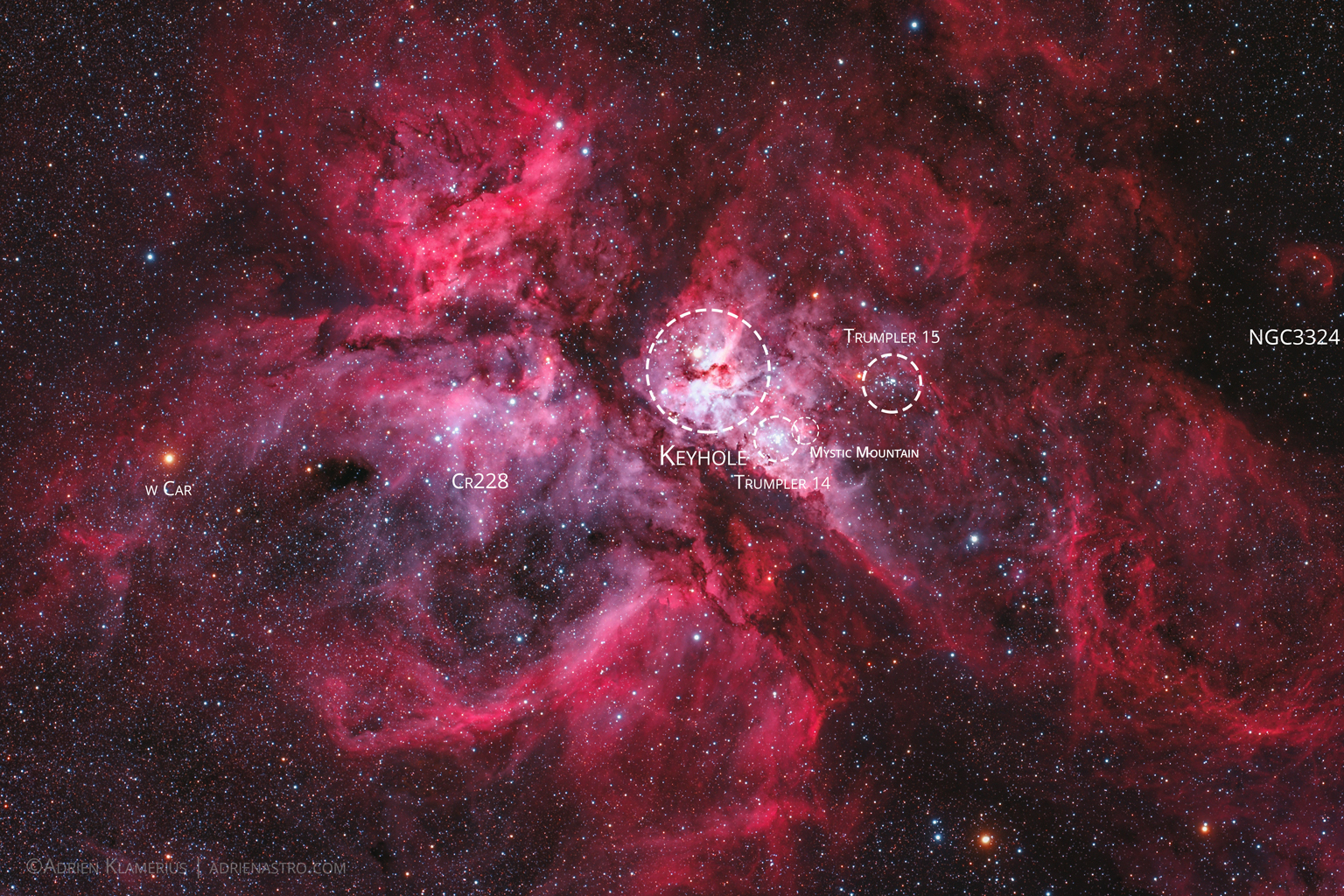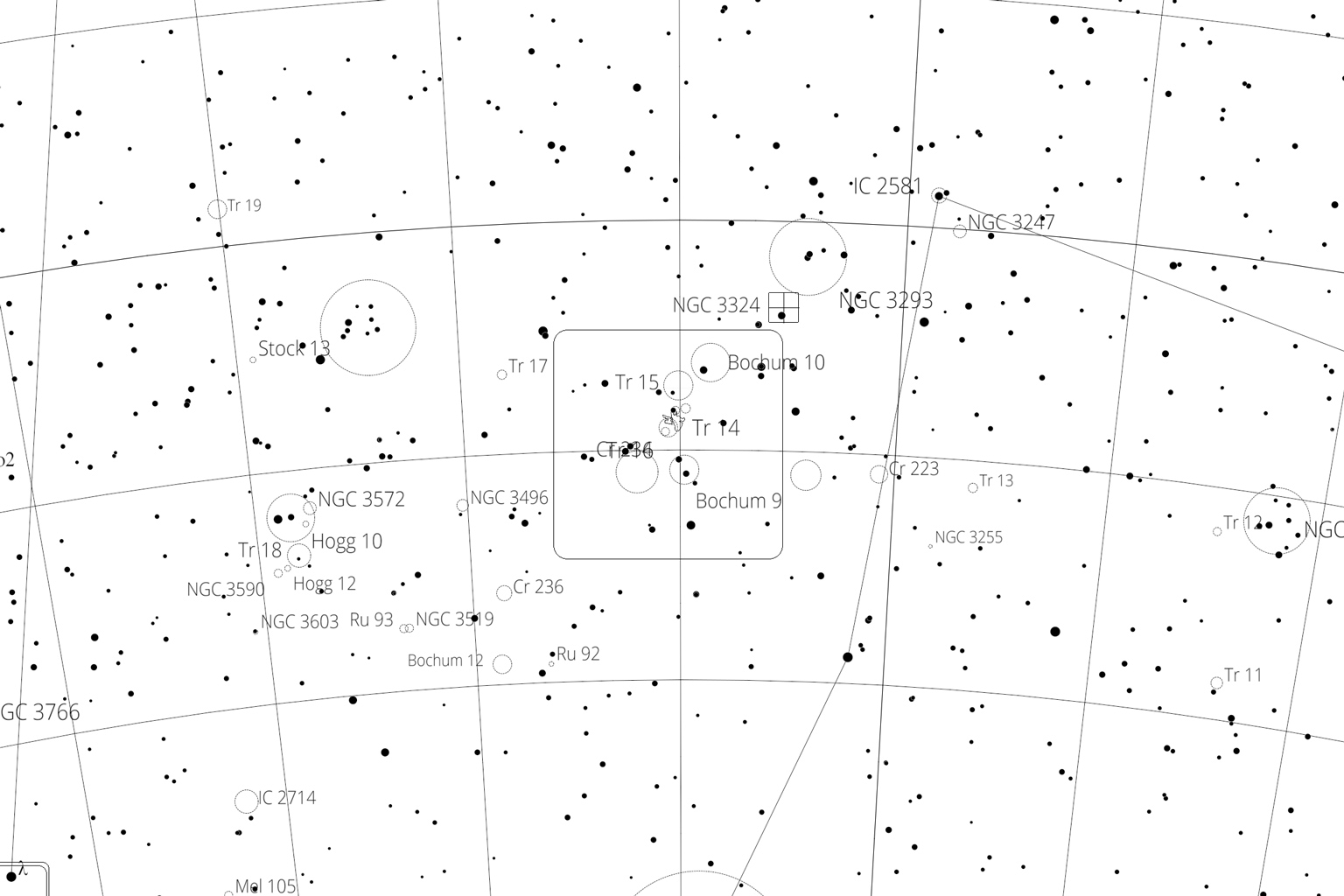One of the most known and grandiose object of the southern sky, is the Great Carina Nebula, catalogued as NGC 3372. A large, complex area of bright and dark nebulosity in the constellation Carina (part of the older, larger southern constellation Argo Navis) and is located in the Carina–Sagittarius Arm. The nebula lies at an estimated distance of 7500 light years from Earth and corresponds to a diameter of about 460 light years.
The Eta Carinae Nebula is one of the most spectacular example of an active star forming regions, an emission nebulae, that’s powered by many young, extremely massive stars. Chandra X-Ray Observatory has detected more than 14,000 stars in the region and including at least 12 known star clusters.
Adjacent to the star Eta Carinae dark clouds of cold molecules and dust within the Carina Nebula, containing bright filaments of hot, fluorescing gas, silhouetted against the much brighter background nebula gives the center of the nebula a keyhole shape.
The object was discovered by Nicolas Louis de Lacille French astronomer in 1751 during his expedition to South Africa.
INSTRUMENT Takahashi FSQ-106
CAMERA Canon EOS 60Da
MOUNT Skywatcher HEQ5
GUIDING Lacerta MGen Autoguider
EXPOSURE TIME 28x5min, 24x7min UHC
LOCATION Namibia, Isabis Farm
DATE 2018.05.10





